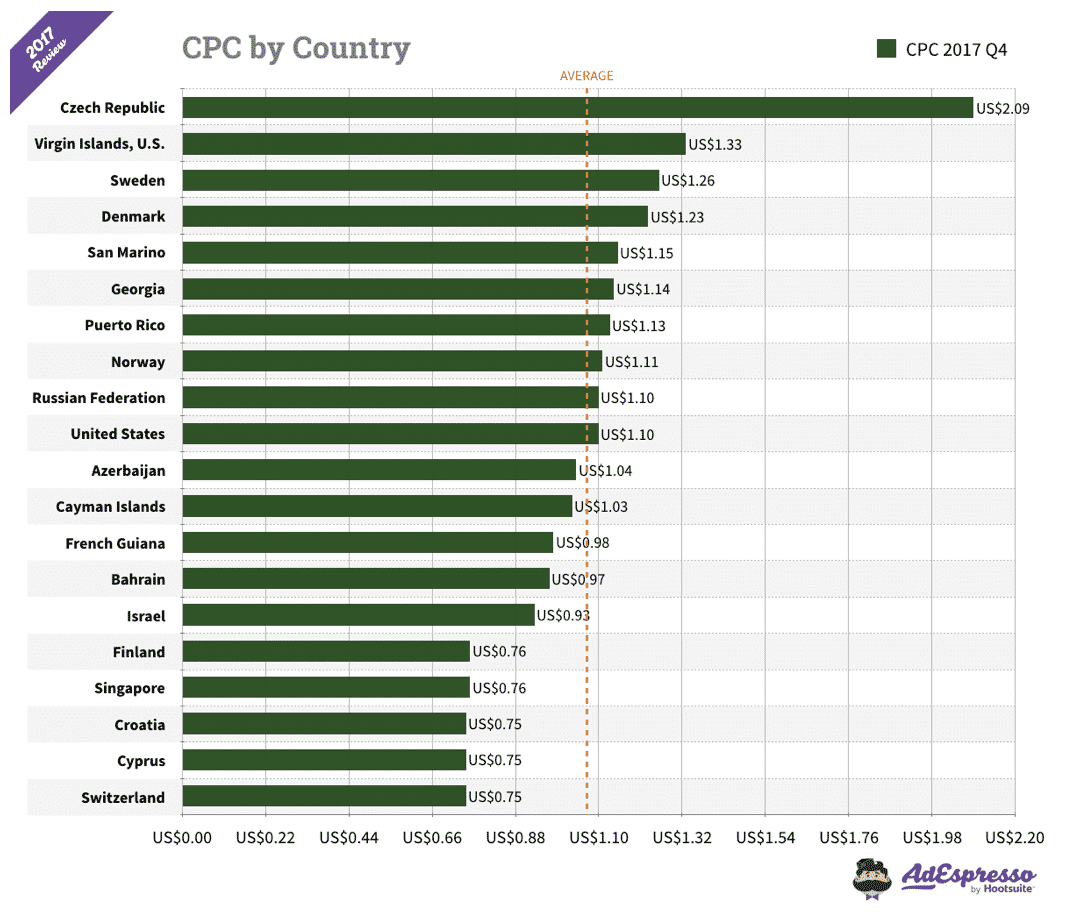Global Marketing 101: Are You Ready to Go International?
by Ana Gotter • September 11, 2018
The idea of scaling your business to an international level can be both intimidating and incredibly alluring at the same time. The thought of a wider audience base could mean more stability and more room to scale is an appealing one.
Our world is now more hyper-connected than ever before, and even small businesses with low budgets are able to offer their products and services to customers at every all ends of the earth. This is an exciting time for business owners and entrepreneurs, but it doesn’t come without its challenges.
One of the biggest challenges that businesses will face when scaling to this level will actually be the marketing. When executed correctly, global marketing campaigns will position you as a leading competitor in markets all over the world, if you so choose, but can be a little more difficult than you’d expect.
The key is finding a balance between global and regional campaigns, intertwining the two and having solid strategies in place. In this post, we’re going to look at how to do all of this and more.
Global and Regional: How to Strike the Balance
It would be great if you could run one massive, Super Bowl-sized ad campaign that would reach audiences everywhere and get conversions. Unfortunately, global marketing doesn’t work like that.
Even small businesses utilize audience segmentation and this is going to be important on a regional level when you’re running global campaigns. After all, each individual region could have their own culture, pain points and yes, languages spoken.
You may also have different shipping or trial offers depending on the location. It’s not all that expensive, after all, to take returns by mail from the next city over, but having them shipped from China is another story.

If you aren’t keeping those differences in mind, you’re going to be letting everyone down in the long run. So, instead of trying to lump all of your customers into a single group, focus on creating regional campaigns that cohesively work together in a big-picture view, but which allow you to reach each audience segment most effectively.
You won’t just want to adjust each individual ad for the region, either. You’ll want to develop unique strategies based on your brand’s current standing in each region and its audience’s potential relationship with it. You may be focusing heavily on lead generation in one country, therefore, while just trying to build brand awareness in another. Each region must be assessed separately and the campaigns created dependent on what you find.
So What Should Stay Global?
While you’re breaking down your actual campaigns based on region, it can be difficult to know what to segment.
Here’s what should ideally stay consistent and viewed from a global perspective.
- Your budget. You don’t need to allocate it equally among regions. Realistically, you almost definitely wouldn’t and would put more ad spend to high value or high target areas. You need to have a set marketing budget, however, for your ad campaigns as a whole and understand how it’s broken down amongst different sectors.
- The tools that you use. You don’t want two different regions using two different tools, no matter what kind of tools you’re using. Imagine trying to compare campaigns from two regions, where each one is utilizing different analytics software. It would be impossible to measure them up against each other accurately.
- The agencies you hire. In the majority of cases, staying consistent with your agency will ensure that you’re getting the same level of strategy across the board. You may need to hire copywriters to translate, but the agencies themselves can ensure that the targeting, messaging, and strategy is all set.
- Your branding. With very few exceptions, your branding should be a staple part of your marketing than translates well from language to language and region to region. Your offers, value offers, and unique selling propositions can all change, but the branding will keep your campaigns grounded.
3 Warnings to Keep In Mind When Going Global
There are a few traps that a lot of brands fall into when they’re trying to expand their business on an international scale. When you’re creating your global marketing campaigns, keep the following considerations in mind:
- PPC costs are going to vary depending on location. Plenty of businesses are shocked to realize that scaling internationally doesn’t just mean scaling the ad budget. PPC costs can vary heavily depending on the audience being targeted, and yep, this is affected by location. Research by companies like AdEspresso shows that the average CPC or CPM are at least twice as much in some countries than others…and this can fluctuate. Be ready for this when breaking into a new market.

Image source: AdEspresso
- Regulations and laws may vary based on country or region. Marketing laws can vary from state to state. It shouldn’t be a shock that they can change from country to country, too. Laws may be stricter around certain products, like supplements or alcohol and may vary on things like contest regulations. Make sure you check for these differences up front.
- Not everything translates well. And we don’t necessarily mean that literally, though certain phrases definitely don’t work when going from one language to another. Remember when Chevrolet named a car Nova, and it bombed because “no va” in Spanish means “no go?” Even more significantly, though, are the cultural differences. One brash campaign that Americans find bold and funny, for example, could easily offend more conservative cultures. Just because one campaign works for one region doesn’t mean it will work in another, so your messaging needs to be tailored to each.

Conclusion
Global marketing may sound all-encompassing, but the reality is that it will be most effective when you instead focus on coordinating regional strategies to work cohesively together. Remember to watch out for common pitfalls as you’re scaling and to customize your marketing efforts (including your site, if necessary) to relevant audiences and you’ll see success in each region and overall.
Want to run global PPC campiagns? Disruptive Advertising has experience with this, so shoot us a message and see how we can help you.
What do you think? Do you run global marketing campaigns? What percentage of your global strategies focus on regional campaigns? Share your thoughts and questions in the comments below!




